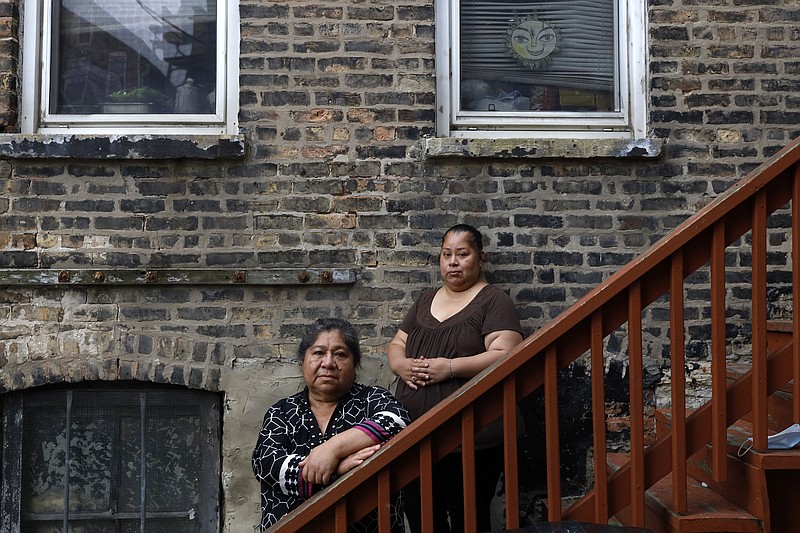CHICAGO (AP) — Most mornings, 62-year-old Maria Elena Estamilla wakes up with pelvic pain and dread that she faces the same fate as her mother and grandmother: fatal cervical cancer.
The Chicago woman’s last full medical exam was in 2015 and she sees no options for care as a Mexican immigrant without permission to live in the U.S. She’s not eligible for Medicare, Medicaid or Affordable Care Act coverage. As a child care worker, she didn’t have employer coverage. She can’t afford private insurance.
But things may soon change.
Illinois is among a handful of Democratic-run states extending health insurance coverage to adult immigrants in the country illegally, including seniors. The state, which became the first to offer a Medicaid-like program for older immigrants last year, used a new budget to expand the program. California followed suit, including coverage for those 50 and over in the latest budget. And Oregon’s governor signed a plan this week offering benefits to low-income immigrants over 19. New York advocates are banking on the momentum to do the same.
Supporters say the trend is crucial during a coronavirus pandemic that has left immigrants, who are disproportionately essential workers, more vulnerable to COVID-19 and as federal remedies, like an immigration overhaul or “public option” health insurance, face tough political odds. While opponents question the cost and using taxpayer funding, experts believe it will ultimately save money and address looming issues with an aging immigrant population.
“This program can’t come any faster for me because of the pain and discomfort I feel,” Estamilla said. “I’m very scared.”
Immigrants, both with legal status and without, are more likely to be uninsured than citizens.
Among those under 65, roughly 46 percent of immigrants in the country illegally don’t have insurance, compared with about 25 percent of immigrants with legal status. About 9 percent of citizens are uninsured, according to a Kaiser Family Foundation analysis in July, which didn’t include data for those over 65.
Barriers include cost and limited options. For instance, green card holders must wait five years for Medicaid eligibility.
When it comes to using public benefits, there are also concerns about repercussions like deportation. A Trump administration rule denying green cards to immigrants who used public benefits had a chilling effect. Use of food stamps declined 37 percent among noncitizens from 2016 to 2019, according to a Migration Policy Institute study in December.
Esther Corpuz, CEO of Alivio Health Center, said enrolling people in services remains difficult even after the Biden administration scrapped the “public charge” rule. Alivio runs Chicago-area clinics serving 50,000 patients, mainly immigrants without legal status.
“There still is that fear if they sign up for some kind of governmental benefit … that will be used against them in the future,” she said.
In recent years, about half a dozen states have focused on health coverage for immigrant children and young adults without legal status. Illinois, California, Oregon are among those covering children. Last year, California began offering public insurance for all low-income residents under 26.
But focusing on older immigrants is becoming more urgent, experts say.
Immigrants are more likely to remain in the U.S. compared with two decades ago, according to Arturo Vargas Bustamante, a professor at the University of California, Los Angeles’ Fielding School of Public Health. According to a July study he co-wrote, immigrants’ median age increased from 37 to 45 between 2000 and 2018.
Without action, America faces a health care crisis as immigrants age, Bustamante said, adding that offering insurance will save money by reducing reliance on emergency rooms.
Leaders in Illinois and California say their solution is inching toward coverage for all, which also makes the high cost more politically palatable.
“Look at what immigrants do for our economy,” Democratic Illinois House Speaker Emanuel “Chris” Welch said. “Including them in our health insurance, it keeps them healthy and allows them to go to work and compete and be able to contribute.”

